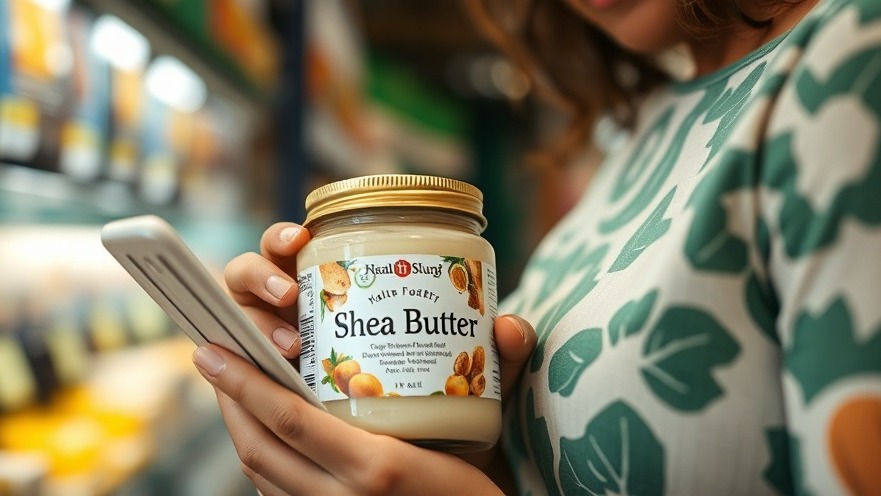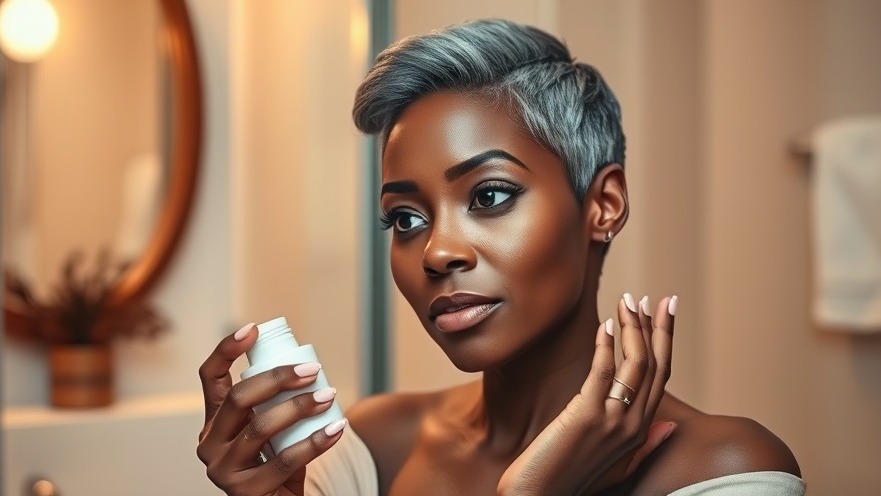
Shea butter has emerged as a powerhouse ingredient in the skincare world, particularly for facial care. This natural substance, derived from the nuts of the African shea tree, offers a remarkable combination of moisturizing, healing, and protective properties. While it's been used for centuries in traditional African skincare practices, modern research has validated many of its beneficial effects. This comprehensive guide explores the various ways shea butter can transform your facial skincare routine.
What Is Shea Butter?
Shea butter is a fat extracted from the nuts of the Vitellaria paradoxa tree (formerly known as Butyrospermum parkii), which grows primarily across West Africa. The butter is harvested through a labor-intensive process that begins with collecting the nuts, removing their shells, crushing and roasting the kernels, and finally grinding them into a smooth, creamy butter.
The resulting substance has an ivory to off-white color and a rich, creamy consistency that melts upon contact with skin. What makes shea butter particularly special is its high concentration of:
Fatty acids (oleic, stearic, palmitic, and linoleic acids)
Vitamins A, E, and F
Triglycerides
Cetyl esters
Natural antioxidants
Key Benefits for Facial Skin
1. Superior Moisturization
Shea butter stands out as an exceptional moisturizer for facial skin due to its high concentration of fatty acids and vitamins. These components create a protective barrier on the skin's surface that:
Locks in existing moisture
Prevents transepidermal water loss
Provides sustained hydration that can last for several hours
Penetrates deeply without feeling greasy or heavy
Unlike petroleum-based moisturizers that simply sit on top of the skin, shea butter's natural lipids are similar to those found in skin, allowing for better absorption and integration with the skin's natural moisture barrier.
2. Anti-Inflammatory Properties
Research has confirmed shea butter's significant anti-inflammatory capabilities, making it particularly beneficial for facial skin conditions characterized by inflammation, such as:
Rosacea
Eczema
Dermatitis
Sunburn
General redness and irritation
The anti-inflammatory effects can be attributed to several compounds in shea butter, including lupeol cinnamate, which inhibits pro-inflammatory enzymes. This makes shea butter an excellent choice for sensitive skin that reacts easily to environmental stressors.
3. Anti-Aging Effects
One of the most sought-after benefits of shea butter is its potential to minimize signs of aging. It works through multiple mechanisms:
Stimulating collagen production, which improves skin elasticity
Preventing collagen breakdown through antioxidant activity
Reducing the appearance of fine lines and wrinkles
Improving skin tone and texture
Protecting against environmental damage that accelerates aging
The vitamin E content in shea butter provides additional antioxidant protection against free radicals, which are primary contributors to premature skin aging.
4. Healing and Repairing Properties
Shea butter has remarkable abilities to accelerate healing and repair damaged facial skin:
Promotes faster healing of small cuts, blemishes, and microtears
Helps fade scars and dark spots
Regenerates skin cells
Improves skin elasticity during the healing process
Provides relief from itching associated with healing skin
These properties make shea butter valuable for post-treatment skincare after procedures like chemical peels or microdermabrasion.
5. Natural UV Protection
While not a replacement for dedicated sunscreen, shea butter does contain a natural SPF estimated between 6-10. This provides some basic protection against UV damage to facial skin. The cinnamic acid esters in shea butter absorb some UV radiation, offering mild protection from environmental damage.
6. Balancing Oil Production
For those with combination skin, shea butter offers a unique benefit: it can help balance sebum production. By providing adequate moisture, it signals to oil-producing glands that sufficient hydration is present, potentially reducing excess oil production over time.
Who Benefits Most From Facial Shea Butter?
Dry Skin Types
People with dry skin stand to gain the most from facial shea butter use. The intense moisturizing properties address flakiness, tightness, and discomfort associated with dehydrated skin. Dry skin types can use shea butter more liberally and may benefit from daily application.
Mature Skin
As skin ages, it loses natural oils and moisture retention capacity. Shea butter's emollient properties and anti-aging benefits make it especially valuable for mature skin that needs additional support to maintain elasticity and hydration.
Sensitive Skin
The soothing, non-irritating nature of pure shea butter makes it suitable for sensitive facial skin that reacts negatively to synthetic ingredients. Its anti-inflammatory properties can calm reactivity and reduce redness.
Winter-Stressed Skin
During cold winter months, when skin is exposed to harsh weather and indoor heating, shea butter provides excellent protection against environmental damage and moisture loss.
Potential Concerns and Considerations
Comedogenicity and Acne-Prone Skin
Despite claims by some brands that shea butter is non-comedogenic, its rich composition may indeed clog pores in some individuals. Those with acne-prone skin should:
Start with small amounts in a limited area to test reaction
Consider using products where shea butter is not the primary ingredient
Look for formulations that balance shea butter with non-comedogenic ingredients
Avoid applying heavy layers of pure shea butter overnight
Allergic Reactions
While true allergic reactions to shea butter are rare (even among those with tree nut allergies), they can occur. Always perform a patch test on a small area of skin before applying to your entire face.
Quality Matters
The benefits of shea butter can vary significantly depending on its quality. For facial application, consider these factors:
Raw, unrefined shea butter retains more beneficial compounds
Organic certification ensures freedom from pesticide residues
Fair-trade shea butter supports ethical harvesting practices
Yellow shea butter (from East Africa) may have different properties than ivory shea butter (from West Africa)
How to Incorporate Shea Butter Into Your Facial Skincare Routine
As a Standalone Moisturizer
Pure shea butter can be applied directly to the face as a moisturizer:
Cleanse your face thoroughly
While skin is slightly damp, take a small amount of shea butter
Warm between fingertips until it melts slightly
Gently press and massage into skin using upward motions
For best absorption, apply at night when skin undergoes natural repair processes
As Part of a DIY Facial Mask
Create a nutrient-rich facial mask by combining:
1 tablespoon of pure shea butter (melted)
1 tablespoon of raw honey (antibacterial properties)
3-4 drops of grapeseed oil (lightweight and non-comedogenic)
Optional: 2 drops of lavender essential oil (soothing properties)
Apply to clean skin, leave for 15 minutes, then rinse with warm water.
In Commercial Products
Look for facial products that list shea butter among the first five ingredients for significant benefits:
Night creams
Intensive moisturizers
Hydrating serums
Under-eye treatments
Lip balms and treatments
Seasonal Adjustments
Consider modifying how you use shea butter based on seasonal needs:
Winter: More liberal application, possibly as a protective layer before going outdoors
Summer: Lighter application, potentially mixed with aloe vera for cooling properties
Spring/Fall: Moderate use as needed based on environmental conditions
Conclusion
Shea butter offers remarkable benefits for facial skincare when used appropriately for your skin type and concerns. Its natural origin, multifaceted benefits, and versatility make it a valuable addition to many skincare routines. While not everyone will experience the same results due to individual skin chemistry, many find that shea butter provides superior moisture, protection, and anti-aging support compared to synthetic alternatives.
By understanding both the benefits and potential drawbacks of facial shea butter application, you can make informed decisions about how to incorporate this natural ingredient into your personal skincare regimen. Whether used pure or as part of carefully formulated products, shea butter continues to demonstrate why it has remained a treasured skincare ingredient across generations.
 Add Row
Add Row  Add
Add 




Write A Comment